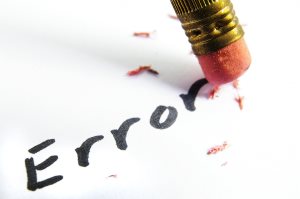How NOT to Write a Cover Letter

Do NOT:
Forget the purpose of the letter.The cover letter primarily demonstrates two things: your knowledge of the company and its culture, and your ability to communicate. According to this article at Life Hacker, the cover letter should show that you’re smart, that you’ll get things done, and that you’ll fit in well with a company’s corporate culture. Doing your homework about the company will help you assess the climate and inform your writing style.
Address the letter to “Dear Sir or Madam.”This standard opening indicates that you couldn’t bother to find out the name of the person who would be reading your letter. A few minutes poking around on the company’s website can usually unearth the name of the hiring manager. You can also call the office and ask who reviews resumes.
Be overly formal…or familiar.If the standard boilerplate is bad, being too chummy is worse. Even if you’re friends with the president of the company, you should stay professional. Find a balance between sounding like a robot and a texting teenager. Also, even if you’re desperate for a job, try not to come across that way.
Be gimmicky or cute.Your cover letter should follow the standard business letter format. The Purdue Online Writing Lab has a great primer here. Creative fonts, colored paper, and clip art will make your cover letter look like a middle school art project. Show a little personality; after all, it’s important that you’re a good fit for the culture of the hiring company.
Ramble on.A standard cover letter consists of three to four short paragraphs, and never runs more than a page. Human resources has no more than a few seconds to devote to your letter, so make sure to keep short and, as they say in the newspaper business, don’t bury the lead. The “lead” in a cover letter is what makes you the best, most appealing candidate for this position. Traditionally, the letter begins with a sentence announcing your candidacy for the position. The HR professional has already figured this out. Instead, open with a hook—an interesting anecdote, a fascinating fact—that makes you uniquely qualified.
Fail to mention mutual contacts.Susan Adams of Forbes recommends dropping names as soon as possible, “[n]aming someone you know in common: ‘Carol McGillicutty recommended I get in touch about the sales manager job at Adams & Co.’” The traditional advice that it’s not what you know but who is still valid. The cover letter is the perfect place to tastefully announce your connections with the company.
Fail to proofread.The worst thing you can do is submit a cover letter riddled with typos. Not only does this demonstrate a lack of communication skills, but also a poor attention to detail. Neither of these qualities makes you an attractive candidate to potential employers, so make sure you do more than use the spell-check feature of Word, which may miss many errors. Instead, get a trusted, grammar-savvy friend to review it. You can also run it through Grammarly, a super-charged spell-checker that recognizes contextual errors that Word will miss.
Once you’ve eliminated all the common mistakes from your cover letter, you should end up with a much stronger, more persuasive piece of writing. One final piece of advice: don’t send the exact same letter for every job. Always personalize it with relevant details and tailor it to the individual company; human resources will appreciate the extra effort.

